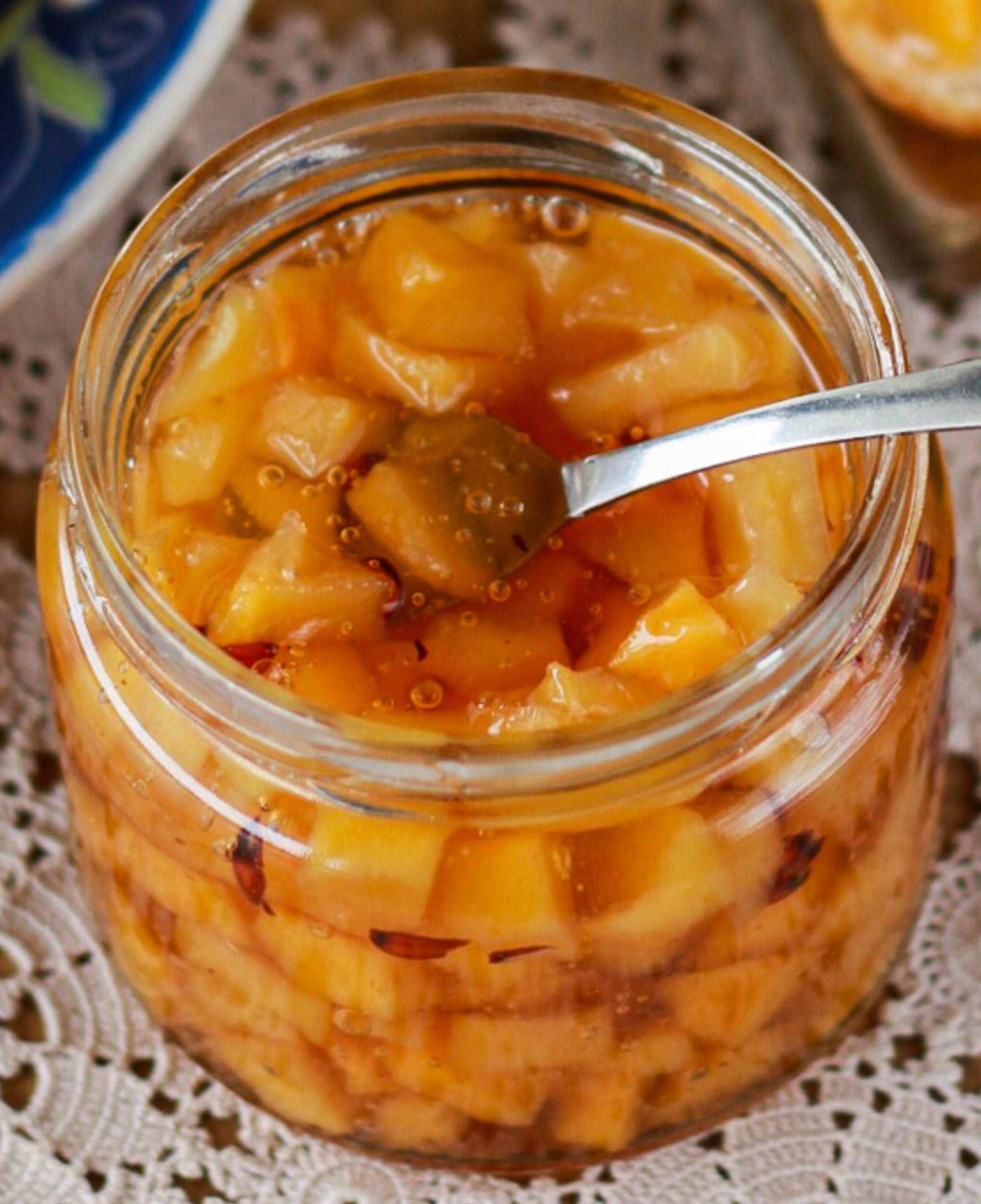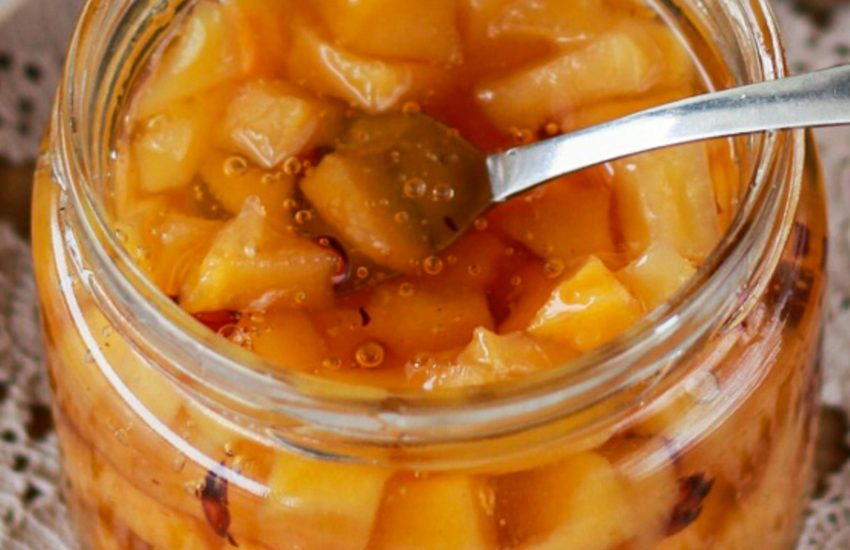If you are interested in a way to preserve the flavor of ripe peaches all year round, canning them at home with a water bath canner is an excellent option. This recipe guidance will show you exactly how to make peaches safely and efficiently using basic ingredients like fresh peaches, sugar, water, and jars. At the end of this process, you’ll have delicious peaches that can last for over a year in storage. Let us discuss into everything you need to know about canning peaches, from choosing the best peaches to know how to prepare and store them.
Choosing the Best Peaches for Canning
When it comes to canning, not all peaches are created equal. The type of peach you choose will affect both the ease of the canning process and the taste of your finished product.
Freestone vs. Clingstone Peaches
- Freestone peaches are perfect for canning. As the name shows, the pit inside these peaches comes away freely from the fruit. This makes peeling and slicing a breeze, which is important when you’re processing a large number of peaches.
- Clingstone peaches, on the other hand, cling tightly to their pits, making them more challenging to work with. Trying to separate the fruit from the pit often leads to wasted peach flesh, and it can be frustrating to deal with, especially for starters.
Do not use canning white peaches as it is believed they do not contain the required acidity necessary for canning purposes. The choice should be large yellow peaches which are slightly firm in texture. They should be squishy ripe, but not too squishy as fat tom peaches tend to lose shape during the canned process.
Simple Syrup for Canning Peaches
One reason many people like canning their own peaches is the control they have on the sugar level in the syrup. Many, however, prefer light syrup, so that the taste of the fresh peaches is not concealed. Hence for this guide, a light syrup preparation consisting of only sugar and water will be utilized.
Syrup Ratio for Light Syrup:
- 2 cups granulated sugar
- 6 cups very hot water
Blend nicely until the sugars are well assimilated. You can of course personalize the syrup by adding spices like cinnamon or healthful things like honey and the like.

Detailed Step-by-Step Process for Canning Peaches
Step 1: Sterilize Your Jars and Lids
Before you start the canning process, it is important to sterilize your jars, lids, and rings. You can do this by washing them in the dishwasher using the “sterilize” or “bottle” setting. Make sure to use new, unused lids each time you can, as this ensures a proper seal.
Step 2: Preparing the Water Bath Canner
Fill your water bath canner with water to cover the jars by at least 2 inches once they’re submerged. Bring the water to a simmer and keep it hot while you prepare the peaches.
Step 3: Blanch and Peel the Peaches
To peel peaches, transfer them to the boiling water for 10-20 seconds. Bring a large pot of water to the boil, then drop in the peaches (in batch lots if needed), 20 seconds. After straining the noodles, transfer to an ice bath to cool and prevent further cooking. After they are cool, The skins will slide off easily. Split the peaches in half to remove the pit and slice the peaches.
Step 4: Filling the Jars
Begin to pack the sliced peaches into your sterilized jars. Nestle the peaches together without squishing them too much. Syrup — Leave a small gap at the top (headspace is what this is called) for your syrup.
Step 5: Adding Simple Syrup
Add Sugar Syrup to Light Vigorously jiggle and tap the jars to level off the peaches then ladle in syrup, leaving ½ inch headspace. Tap the jars gently on the counter to release any trapped air bubbles.
Step 6: Wipe, Seal, and Process
Clean the rims of the jars for a tight seal, and put a hot sterilized lid on each jar. Screw on lids with rings (fingertip tight, do not overtighten) Using a jar lifter or tongs, gently lower the jars into the hot water bath.
Once the water comes to a rolling boil, process the jars for 25 minutes. If you’re at a high altitude, you’ll need to add additional time based on your altitude level.
Step 7: Cool and Store the Jars
Once your processing time is up, turn off the heat and then let the jars stand in the canner for an additional 5 minutes. Using your jar lifter remove the jars and place them on a towel for complete cool down. Press in the center of each lid after a couple of hours to check the seal. No pop up — your jar is sealed correctly!
Storing Your Canned Peaches
Cool your peaches, then store them away. As you can see, it to keep them fresh and for you safe
- Storage Duration: Properly sealed jars can last for 12 to 18 months, though they are often safe to eat even after this time.
- Check Seals: This jam can be stored in jars for 12 to 18 months without going bad, but even after one and a half years it is perfectly edible.
- Spoilage: The jars must be sealed before storing the apples. If the lid pops up and down, or there are leaks, then it didn’t seal.
Raw Pack vs. Hot Pack Canning Methods
This is a raw pack recipe, which means the peaches are put into the jars without cooking prior to putting them in jars of syrup. It works faster and easier, but fast packing can cause fruit float (when you pour syrup over the top of the jar after processing, most pieces of peach will rise to the surface) not always what I want.
As the name suggests, this is the method to can peaches without sugar and uses a hot pack: you briefly cook the peaches before packing them into jars. This method is a little more time-consuming but might result in a peach with richer color and extended shelf life. Peaches canned without sugar or syrup must be packed hot in order to safely can them.
Hot Pack Method Steps:
- In a large pot, add the maple syrup and then heat until it is boiling.
-
Put in the peach slices and bring to a simmer for five minutes.
-
Ladle peaches into jars with a slotted spoon and cover completely with hot syrup.
Recipe Variations and Customizations
The recipe is pretty much what you would expect from a canned meal, but there are variations on how you prepare your canned peaches outside of the water for flavor or diet-friendly alternatives.
- Add cinnamon: Add a cinnamon stick to the bottom of each jar before adding peaches.
- Add vanilla: Split the vanilla pod and whilst heating up the syrup add the pod to infuse. Pour the syrup over the peaches while removing the pod.
- Use honey or fruit juice: For a natural sweetener blend with honey or fruit juice instead of sugar. A good rule of thumb would be to add 1 cup of honey for every 4 cups of water when producing syrups.
What to Do if Your Jars Don’t Seal Properly
If a jar doesn’t seal properly, you have many options:
- Reprocess the jar: Use a new lid and reprocess the jar in the water bath.
- Refrigerate and consume: If you don’t want to reprocess, just store the unsealed jar in the fridge and consume within a week.
Canning Peach
Course: Side Course, Snack
Cuisine: American
Servings: 7 Quarts
Calories: 430
Prep Time: 25 minutes
Cook Time: 50 minutes
Total Time: 1 hour 15 minutes
Ingredients:
- 7.7 kg fresh freestone peaches (do not use white peaches)
- 7 sterilized quart jars with lids and rings
- Granulated sugar
- Water bath canner
- Jar lifter or tongs
Instructions:
- Sterilize jars and lids: Clean and sterilize jars, rings, and lids using a dishwasher or boiling water.
- Prepare water bath: Fill a water bath canner with water and bring it to a boil.
- Peel peaches: Blanch peaches in boiling water for 30 seconds, then transfer to an ice bath to remove skins. Slice peaches.
- Pack jars: Pack peach slices into jars.
- Make syrup: Dissolve 2 cups of sugar in 6 cups of hot water. Pour syrup into jars, leaving ½ inch of space.
- Process: Place jars in the water bath canner and process for 25 minutes.
- Cool and store: Remove jars and let them cool. Store in a cool, dry place for up to 18 months.
Nutritional Information (Per Serving)
- Calories: 430 kcal
- Carbohydrates: 105 g
- Protein: 10 g
- Fat: 3 g
- Saturated Fat: 1 g
- Potassium: 2093 mg
- Fiber: 17 g
- Sugar: 92 g
- Vitamin A: 3591 IU
- Vitamin C: 73 mg
- Calcium: 66 mg
- Iron: 3 mgs
